Jean-Claude Courtault Petit Chablis 2011
| Country: | France |
| Regions: | Burgundy Chablis |
| Winery: | Jean-Claude Courtault |
| Grape Type: | Chardonnay |
| Vintage: | 2011 |
| Bottle Size: | 750 ml |
Michelet Petit Chablis is made from 100 percent Chardonnay.
Golden color. White flowers, fresh, lime and citrus aromas. Pleasant mouthfeel, supple, crisp, fruity flavors.
Machine harvested at full maturity (around Sep. 25th - lasts 12-18 days); pneumatic press; fermentation in temperature controlled stainless steel tanks for 8-10 days; M.L (2 months after the harvest); aging on the lees until February; racking; fining if necessary; cold stabilization; filtration right before bottling in April.
Ideal as an aperitif, the wine is an excellent companion to seafood.
Cellier du Chateau de la Chaume Petit Chablis is made from 100 percent Chablis.
Color: Pale yellow
Bouquet: White flowers, honeysuckle, linden tree and dried fruits.
Palate: Very pleasant, balanced with tension and nice minerality
Drink as an Aperitif or pair with fish, shellfish.
Jean-Claude et Nicolas Fayolle Hermitage Rouge Donnieres is made from 100% Syrah.
Made from 40-year-old vines planted on granitic and rocky soils in the Lieu dit "Les Donnieres" at the bottom of the Hermitage's hill.
Intense inky ruby red color.
The wine has plenty to offer with red and black fruit aromas, as well as a good minerality.
The finish is very long, clean and juicy and offers a great spicy mouthfeel.
Soil is clay, silica and round pebbles.
Hand harvested in small crates. The grapes are then pumped into tanks (full cluster, not destemmed).
It will stay in this tank for 15 days for the skin contact maceration and the Alcoholic fermentation.
Tey will also use the "rack and return" technique (delestage).
Then the wine is transfered into neutral French Oak barrels where the wine will complete the Malo-Lactic fermentation.
Delicious with grilled red meat such as venison or lamb and most cheeses.
Corinne Perchaud Chablis (half-bottle) is 100 percent Chardonnay.
A classic Chablis with aromas of ripe white fruits and a taste of rich minerals.
The Vineyards The plots are in Chablis located predominantly on the village of Fleys, but also on the common Chichée and Fontenay, their total area is 13 hectares. They are mostly north and north-west oriented. The ground floor is Kimmeridgian marl consisting clay and limestone. The oldest of of the vines is 35 years. Winemaking After a slight settling, the juice is put in stainless tanks to achieve its fermentation both alcoholic and malolactic. There is a long aging on lees to refine the flavors and develop complex flavors. If necessary, we make a collage of Bentonite to remove proteins and a passing cold which eliminates tartar crystals. Then we perform a tangential filtration method friendly to the wine. The wine is bottles between 14 and 21 months after the harvest. 2011 Vintage The relatively high temperatures at the end of winter allowed an early bud vines in early March. With a hot, dry spring flower took place in good conditions. In July, a hailstorm located did some damage to our Fourchaume plot. July and early August, rainy and stormy brought the water needed vineyards. The dry and sunny weather of the second half of August brought the grape good maturity. The harvest began on September 2 under clement skies.
Corinne Perchaud Chablis (half-bottle) is 100 percent Chardonnay.
A classic Chablis with aromas of ripe white fruits and a taste of rich minerals.
The Vineyards The plots are in Chablis located predominantly on the village of Fleys, but also on the common Chichée and Fontenay, their total area is 13 hectares. They are mostly north and north-west oriented. The ground floor is Kimmeridgian marl consisting clay and limestone. The oldest of of the vines is 35 years. Winemaking After a slight settling, the juice is put in stainless tanks to achieve its fermentation both alcoholic and malolactic. There is a long aging on lees to refine the flavors and develop complex flavors. If necessary, we make a collage of Bentonite to remove proteins and a passing cold which eliminates tartar crystals. Then we perform a tangential filtration method friendly to the wine. The wine is bottles between 14 and 21 months after the harvest. 2011 Vintage The relatively high temperatures at the end of winter allowed an early bud vines in early March. With a hot, dry spring flower took place in good conditions. In July, a hailstorm located did some damage to our Fourchaume plot. July and early August, rainy and stormy brought the water needed vineyards. The dry and sunny weather of the second half of August brought the grape good maturity. The harvest began on September 2 under clement skies.
All older vintage wines have been purchased from a single collectors cellar. Pictures can be requested before shipment.
Jean-Claude Courtault Petit Chablis 2011 is made from 100% Chardonnay, machine harvested at full maturity (around Sep. 25th - lasts 12-18 days); pneumatic press; fermentation in temperature controlled stainless steel tanks for 8-10 days; M.L (2 months after the harvest); aging on the lees until February; racking; fining if necessary; cold stabilization; filtration right before bottling.
Golden color. White flowers, fresh, lime and citrus aromas. Pleasant mouthfeel, supple, crisp, fruity flavors.
Ideal as an aperitif, the wine is an excellent companion to seafood.
The Jean-Claude Courtault Estate
This is a family owned winery founded by Jean-Claude Courtault in 1984. A native of Touraine, Jean-Claude Courtault arrived in Lignorelles in 1974 to work as a vineyard manager for one of the villagees wine estates. In 1984, JC Courtault purchased 1.5 hectare of 4 year old vines in the Chablis area. Then, he rented a piece of land in the Chablis appellation area that he planted with the help of his wife, Marie-Chantal.
They released their first vintage in 1987 and the same year they were rewarded a gold medal at the "Concours Genaral des Vins de Paris" competition. This medal was just the first of many awards and prizes that have punctuated JC Courtaultes career, as a recognition of the quality and consistency of his wines. In 1995, the estate measured 12 hectares and progressively expanded to reach now 17.60 hectares in production. The total annual production for the Domaine is 1000 hectoliters on average, split between Chablis and Petit Chablis.
Jean Claude has been joined recently by his daughter Stephanie and her husband.
The Jean-Claude Courtault Estate Vineyard
This is a 18 hectare vineyard (44.50 acres), of which 17.60 are in production. The rest is planted to young vines. The vineyards are located in the communes of Beine, Lignorelles, Chablis, Fye and Villy.
All vines average 15 years of age or older with intense vine density of 6,000 plants per hectare. Pneumatic presses are used along with temperature controlled fermentation vats. Only stainless steel vats are used, not oak barrels.
- back
Avignonesi Desiderio Merlot Toscana IGT is made from Merlot.
Avignonesi Desiderio Merlot has an explosive olfactory impact. The wide aromatic bouquet ranges from cherry and plum jam to notes of black tea, rhubarb and graphite, with small final notes of fermented tobacco. The entrance is bursting. The palate is invested by the imposing and typical structure of Tuscan Merlot, enveloping and warm. Tastefully in symbiosis with the olfactory notes, the dense and linear tannin accompanies hints of coconut and black pepper in retrolfaction.
Review:
James Suckling 94 Points
Proidl Senftenberg Riesling Ried Ehrenfels 1er Cru Kremstal is made from 100 percent Riesling
A concentrated and dense, almost introverted wine made from perfect clusters. Constructed without any ornamentation or hastiness. For connoisseurs who like to leave the vinous beaten path and go exploring.
From a monopol vineyard
The physiologically fully ripened grapes are harvested by hand in several passes at the end of October and beginning of November. A portion of the grapes is destemmed and left on the skins for 10–12 hours of maceration. The leisurely fermentation with ambient yeasts in stainless steel promotes a multilayered expressivity. Bronzite, marble, paragneiss & amphibolite give the wine its great complexity and individuality. After fermentation, extended maturing on the lees in a large wooden cask before bottling at the end of August.
In Austrian wine, "1 ÖTW" refers to the "erste Lage" (first location) quality tier of the Österreichische Traditionsweingüter (ÖTW), an association of quality-focused wineries that classify their wines from single vineyards in specific regions, similar to German vineyard classifications. Wines labeled with "1 ÖTW" represent high-quality wines from a recognized single vineyard site within a participating ÖTW region, like Kamptal or Kremstal.
Review:
"This incredibly youthful and concentrated dry Riesling is a cool customer and needs a lot of aeration to reveal its great depths. Very delicate peach and apricot fruit with notes of chamomile and wild herbs. Really structured but also polished on the compact, medium-bodied palate. Extremely long, stony finish. Sustainable. Drink or hold. Screw cap."
- James Suckling (October 10th 2024), 97 pts

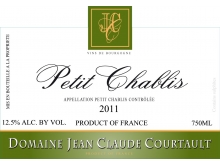
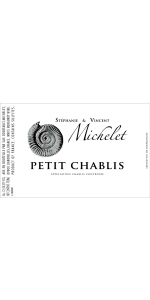
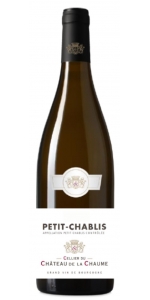
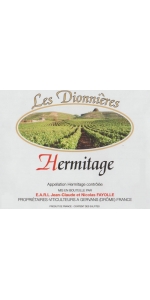
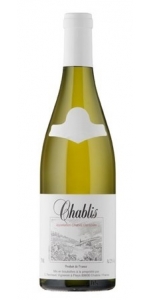


-75x150.jpg)

